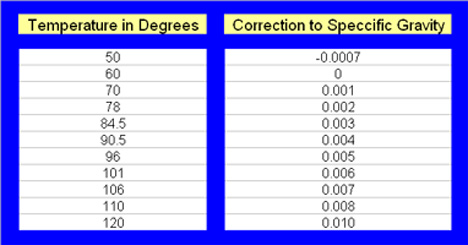How to Use a Hydrometer
This is a question we get quite often. The hydrometer can be a tricky tool to use especially if you do not understand how to use it or how it works. The instructions that come with it are not super great so we thought it would be helpful to break it down for you.
A little about your hydrometer.
The hydrometer is a simple instrument that measures the weight (or gravity) of a liquid in relation to the weight of water.
Because the relation of gravity to water is specified (1.000), the resulting measure is called specific gravity. A hydrometer will float higher in a heavy liquid, such as one with a quantity of sugar dissolved in it, and lower in a light liquid, such as water or alcohol. The average homebrewer has a very keen interest in the amount of sugar dissolved in their wort because yeast converts sugar into carbon dioxide and alcohol. By knowing how much sugar one started with and ended with, one can easily calculate the resulting alcohol content.
There are many variants of the hydrometer. Some have only one scale, some two, and some three. The typical hydrometer measures three things: specific gravity (S.G.), potential alcohol (P.A.), and sugar.
How To Use Your Hydrometer is pretty simple.
Sanitize the hydrometer, test jar, and any tools that may come into contact with your wort/beer.
Draw a sample from your fermenter into the test tube making sure there is no trub or anything in there as that will affect the reading. You want it to be a clean sample. You will want the sample tube to be about 80% full.
Place the tube on a flat surface.
Gently lower the hydrometer into the test jar; spin the hydrometer as you release it, so no bubbles stick to the bottom of the hydrometer (this can also affect readings).
Making sure the hydrometer isn't touching the sides of the test jar and is floating freely, take a reading across the bottom of the meniscus (see image below). Meniscus is a fancy word for the curved surface of the liquid.
Make sure to record your reading. Then you can either drink your sample or toss it.
That's it! Pretty simple, huh? There are a couple of other things you need to know to get an accurate measurement.
Most hydrometers are calibrated to give correct readings at 59-60 degrees Fahrenheit. Higher temperatures thin the liquid slightly and result in lower readings than you'd get at the correct temperature. At 70 degrees F., the reading will be 0.001 low. To correct it, add 0.001 to the reading. At 77 degrees F., add 0.002. At 84 degrees F., add 0.003. At 95 degrees F., add 0.005. At temperatures above 95 degrees F., you risk killing your yeast and losing your beer. If you can't remember all that just print out the chart below.

If your readings are off by a point or a few points it's okay. There a few factors that can lead to that.
Temperature like we just discussed, the amount of malt extract you got out of the can and also how well the malt is mixed with the water.
To get more malt out of the can you can always add hot water into and scrape the sides to get all that out. Then make sure you are mixing everything up very well before you take your sample and pitch your yeast. Always take your sample before you pitch your yeast.
Also, try not to worry about it, regardless you are going to make some awesome beer, so if you are off by a few points it’s not going to make that big of a difference in your beer and the final flavor of your beer.
If you have any questions just contact us and we can help you out!
Cheers!





